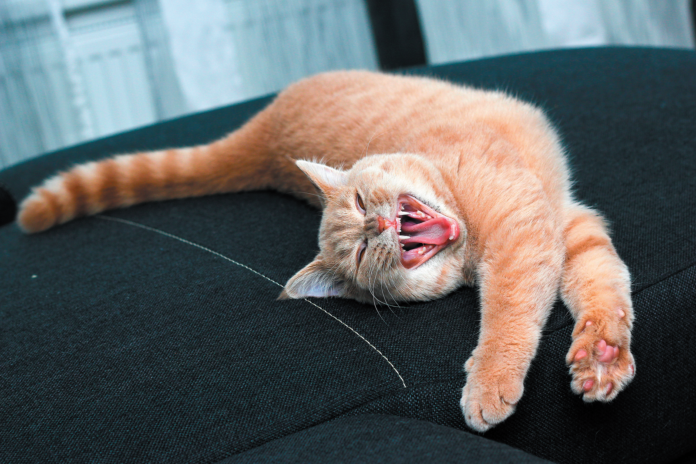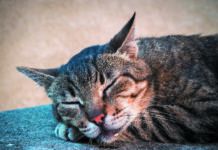Aging cats often start vocalizing a lot more, change how and even whether they interact with people, and start soiling the house. The shifts can come gradually and seem like responses to aches and pains, so people frequently assume they are just signs of a cat growing old. But, says the American Association of Feline Practitioners (AAFP), such differences in cat behavior could be indications of age-related dementia, known in veterinary circles as cognitive dysfunction syndrome.
The disease is quite common. By at least one estimate, more than 50 percent of cats older than 11 exhibit signs of cognitive dysfunction syndrome, and more than 80 percent of cats who are at least 16. But if the signs are recognized early for what they are, steps can be taken to help slow the progression of the disease and allow your cat a better quality of life for a longer period of time.
With that in mind, the AAFP suggests asking yourself the following 10 questions about your geriatric cat. If the answers make it clear that your pet’s lifestyle has changed, it’s worth talking to your veterinarian for a clinical work-up that can rule out other problems, allowing an earlier diagnosis of dementia and more effective treatment.
Note: A number of the questions do not link directly to cognitive decline. But taken as a whole, they can provide clues.
Ten Provocative Questions for Investigation of Possible Cognitive Dysfunction Syndrome*
- What’s the highest surface to which your cat will jump? Does your cat seem lame?
- When was the last time you saw your cat stretch and yawn luxuriously?
- Has your cat urinated or defecated outside of the litter box since the last examination?
- How have your cat’s interactions with its housemates changed?
- Is your cat more aloof or clingier/more affectionate with you than previously?
- Does your cat ‘talk’ (vocalize), meow insistently or yowl for no apparent reason?
- How have your cat’s grooming and sleeping habits changed?
- How have your cat’s eating and drinking habits changed?
- How willing is your cat to play with toys or hunt if given the opportunity?
- How often does your cat act confused, forgetful or depressed?
*From the “2021 AAFP Feline Senior Care Guidelines” in the Journal of Feline Medicine and Surgery (2021) 23, 613–638.
If dementia is diagnosed
While age-related dementia can’t be cured, a number of steps can help slow its advance.
- Engage your cat in activities that require both mental stimulation and physical activity. Pull that string with the feather at the end of it. Let her chase a beam of light across the wall. See if she can forage for her meals in food puzzles. The more she uses her brain, along with the body that is directed by that brain, the more slowly she will lose her mental capacity. She’ll also sleep more soundly, which will contribute to her mental acuity on its own.
- Keep her routine the same. This is not the time to start feeding your pet at different times of day or bringing in a new cat or dog. Don’t rearrange the furniture, either. All of those changes will put her behind the 8 ball.
- Talk with your vet about giving your cat a “brain-boosting” diet. It will contain more antioxidants and fish oil than other cat foods. Evidence for such a diet’s effectiveness is scant, but it also can’t hurt.
- Ask the vet what she thinks about a prescription for selegiline hydrochloride. It has been approved for use in dogs, but some people say off-label use in cats has also helped to slow symptoms of cognitive decline.
- Speak with the vet about prescribing an anti-anxiety medication. It can’t control your cat’s symptoms, but it can help control the fear and unease that often accompany cognitive decline. It may help quell excessive vocalizations, too.
- Put out more litter boxes. That won’t slow dementia, of course, but it can help reduce soiling if your cat keeps forgetting where to eliminate. Make sure the boxes have low sides. Anything perceived as an obstacle may keep a cat from using it.




